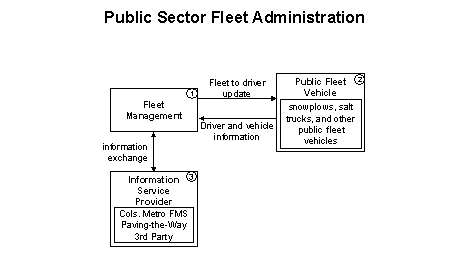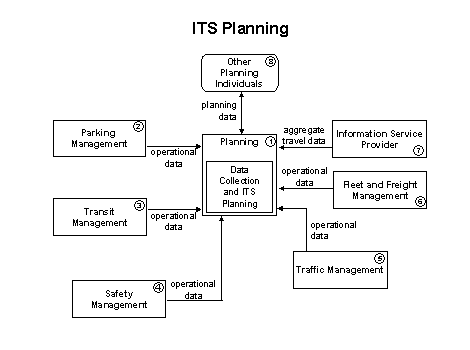
 |
||
4.4.3.5 MiscellaneousThis section presents items that the Transportation Management Committee felt should be included but did not fit well into the other sections. They include how ITS can help fleet management, planning efforts in the region and freight operations. Freight and Commercial Vehicle Operations:It should be noted that the Freight and Commercial Vehicle Operations (CVOs) were considered by the committee members but excluded from this document. In the ITS National Architecture, ITS CVO elements include: Fleet Administration, Freight Administration, Electronic Clearance, Commercial Vehicle Administrative Processes, International Border Electronic Clearance, Weigh-In-Motion, Roadside CVO Safety, On-board CVO Safety, CVO Fleet Maintenance, and Hazardous Materials Management. The state of Ohio, through the Public Utilities Commission of Ohio (PUCO) is deeply involved in these efforts and has been working closely with the federal government over the past year to mainstream these functions in Ohio. However, at this point in time, CVO activities are primarily at a state level and include processes such as commercial vehicle regulations, taxes, and licensing. There is limited exposure at the local level; however, local agencies such as Franklin County and Westerville conduct overweight and other commercial vehicle enforcement activities. For the most up-to-date document on the state of Ohio's effort, please consult the Ohio CVISN Business Plan available through PUCO. The subcommittee agreed that as ITS CVO activities expand in the state, central Ohio will give them consideration and support. One example, MORPC is initiating a study to examine how traveler information could be tailored to the operators of commercial vehicles, exploring another way to integrate these systems. 
This functional flow diagram shows the interconnection between Fleet Vehicles and the Fleet Management subsystem to keep track of administrative concerns.
In the future, this type of Fleet Management can be expanded upon and used for all county maintenance and administrative vehicles, city vehicles and safety management vehicles, as well as the COTA vehicle fleet (see Transit Maintenance Functional Flow Diagram).

This functional flow diagram supports ITS Planning functions. It accepts data from all centers and uses the data to plan new deployments. These data also support policy decision-making, allocation of funding, allocation of resources and other planning activities.
The Planning center accepts data from all the centers represented in the ITS Regional Integration Strategy to determine market readiness and market acceptance in order to plan future ITS deployments. Another component that MORPC oversees is the determination of funding and resource allocation. MORPC manages the Transportation Improvement Program (TIP) for central Ohio and ensures that all ITS projects for the area are programmed. Whether or not projects get programmed in the TIP is related to the information and operational data that are fed into the Planning center. Parking Management, Transit Management, Safety Management, Traffic Management, Fleet and Freight Management, Information Service Provider and Other Planning Individuals all provide data to and share resources with Planning so that new deployments can be planned.
|
||
| US DOT Home | FHWA Home | Operations Home | Privacy Policy | ||